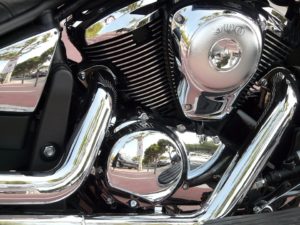Do you used hard chromium? Did you know certain brush plating deposits have similar deposit properties of hard chromium and if properly matched with the right type of application, can serve as viable alternatives. Applications specifying hard chromium plating should be evaluated on a case by case basis to determine if hard chromium is absolutely needed for its specific deposit properties or if a more environmentally friendly alternative is an option.
There are certain benefits than can encourage the use of brush plating considering some of the advantages the process offers over hard chromium bath plating.

The volume of hazardous waste generated from brush plating is considerably lower when compared with waste volumes generated from hard chromium plating. This is a significant advantage when you consider today’s high cost of disposal and treatment of hazardous waste. Additional advantages of the brush plating process are: it’s portable; it’s simple to use and adjustments in chemistry are not required; and it’s accurate and capable of plating to size.
But, there is not one individual brush plating deposit offering all the properties of hard chromium. There are, however, certain brush plated deposits that have similar properties and are useful in salvage or repair applications. The following will provide some qualitative and quantitative data on certain brush plating deposits used in salvage/repair type applications.
Adhesion
Using qualitative adhesion tests listed in ASTM B-571, brush plating deposits can be evaluated and compared to other coatings.
Compressive and tensile bend tests demonstrated the excellent adhesion and cohesion of hard (575 DPH) brush sulfamate nickel deposits. These destructive bend tests also show that this deposit exhibits fair ductility. In comparison, the hard chromium under compressive bending failed both adhesively and cohesively.
Blunt chisel tests of hard brush sulfamate nickel and bath plated hard chromium, show the brush sulfamate deposit exhibits better cohesive properties than the hard chrome after sharp impact.
Tensile Bond
Two different brush nickel deposits were deposited onto SAE 4130 steel and tested in accordance with ASTM C 633-79 to quantitatively test their tensile bond strength.
The first nickel tested was a hard (585 DPH) high speed neutral nickel. The test results report that the samples all failed in the cement joint at an average of 11,280 psi. The results indicate that the cohesive strength and adhesion of the hard nickel on 4130 steel is at least 11,280 psi. It should be noted that this deposit is ranked as having only fair adhesion per brush plating standards, yet this deposit exhibits superior adhesion to flame spray coatings and is at least equivalent to thermal plasma spray coatings.
The second nickel tested was soft (250 DPH) brush sulfamate nickel. Again, the samples failed in the cement joint, this time at 10,090 psi. The test report concludes that the adhesion of the nickel to steel, the cohesion of the nickel, and the adhesion of a second layer of nickel deposited to a first, exceed 10,090 psi.
The brush plating process offers nineteen pure metal plating solutions and several alloy plating solutions. The large selection of plating solutions available proved a variety of deposit properties that can meet many application requirements. Deposit quality, cohesion, and adhesion to the base material are equivalent or superior to good bath plating practice.
Hard chromium plating cannot be entirely replaced using brush plating deposits; however, hard chromium usage can be reduced by carefully evaluating the application and determining if it’s absolutely essential.

 Chinese (Simplified)
Chinese (Simplified)  English
English  French
French  German
German  Spanish
Spanish  Swedish
Swedish 